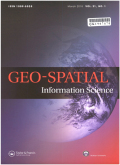- 钛学术文献服务平台 \
- 学术期刊 \
- 基础科学期刊 \
- 天文学、地球科学期刊 \
- 地球空间信息科学学报(英文版)期刊 \
Measuring positive public transit accessibility using big transit data
Measuring positive public transit accessibility using big transit data
基本信息来源于合作网站,原文需代理用户跳转至来源网站获取
摘要:
Most of the current existing accessibility measures quantify the potential of reaching desirable opportunities across space and time. Nevertheless, these potential measurements only illus-trate the maximum possible accessibility a person can have, which may not accurately measure real-world transit accessibility in urban areas. This paper introduces a novel methodology to measure positive public transit accessibility based on multi-source big public transit data such as Smart Card Data (SCD) and Global Navigation Satellite System trajectory data, which embed rich travel information and real-world spatio-temporal constraints. First, we use multi-source transit data to reconstruct trip chains, which are used to extract popular destinations. A novel transit accessibility measure is defined to account for latent trip information such as mode/route preference, opportunity attraction, and travel impedance that are difficult to capture explicitly via traditional normative measures. Finally, we produce accessibility maps to visualize time-varying and heterogeneous accessibility patterns distributed over the study region. We performed an empirical evaluation on real-world transit data collected in Shenzhen City, China, demonstrating the applicability and effectiveness of the proposed method in mapping positive transit accessibility over large metropolitan areas. The results and findings of the empirical study demonstrate that the proposed positive accessibility measure can better capture travel behavior characteristics and constraints than traditional normative measures. The measure-ment method can be used as a practical high-resolution mapping tool for transit decision makers in evaluating public transit systems, supporting strategic transit planning, and improv-ing daily transit management.

推荐文章
内容分析
关键词云
关键词热度
相关文献总数
(/次)
(/年)
文献信息
| 篇名 | Measuring positive public transit accessibility using big transit data | ||
| 来源期刊 | 地球空间信息科学学报(英文版) | 学科 | |
| 关键词 | |||
| 年,卷(期) | 2021,(4) | 所属期刊栏目 | Articles |
| 研究方向 | 页码范围 | 722-741 | |
| 页数 | 20页 | 分类号 | |
| 字数 | 语种 | 英文 | |
| DOI | |||
五维指标
引文网络
引文网络
二级参考文献 (0)
共引文献 (0)
参考文献 (0)
节点文献
引证文献 (0)
同被引文献 (0)
二级引证文献 (0)
2021(0)
- 参考文献(0)
- 二级参考文献(0)
- 引证文献(0)
- 二级引证文献(0)
引文网络交叉学科
相关学者/机构
期刊影响力
地球空间信息科学学报(英文版)
主办单位:
武汉大学(原武汉测绘科技大学)
出版周期:
季刊
ISSN:
1009-5020
CN:
42-1610/P
开本:
16开
出版地:
武汉市珞瑜路129号武汉大学测绘校区
邮发代号:
创刊时间:
1998
语种:
eng
出版文献量(篇)
958
总下载数(次)
0
总被引数(次)
2719
期刊文献
相关文献
推荐文献
- 期刊分类
- 期刊(年)
- 期刊(期)
- 期刊推荐
力学
化学
地球物理学
地质学
基础科学综合
大学学报
天文学
天文学、地球科学
数学
气象学
海洋学
物理学
生物学
生物科学
自然地理学和测绘学
自然科学总论
自然科学理论与方法
资源科学
非线性科学与系统科学
地球空间信息科学学报(英文版)2022
地球空间信息科学学报(英文版)2021
地球空间信息科学学报(英文版)2020
地球空间信息科学学报(英文版)2019
地球空间信息科学学报(英文版)2018
地球空间信息科学学报(英文版)2017
地球空间信息科学学报(英文版)2016
地球空间信息科学学报(英文版)2015
地球空间信息科学学报(英文版)2014
地球空间信息科学学报(英文版)2013
地球空间信息科学学报(英文版)2012
地球空间信息科学学报(英文版)2011
地球空间信息科学学报(英文版)2010
地球空间信息科学学报(英文版)2009
地球空间信息科学学报(英文版)2008
地球空间信息科学学报(英文版)2007
地球空间信息科学学报(英文版)2006
地球空间信息科学学报(英文版)2005
地球空间信息科学学报(英文版)2004
地球空间信息科学学报(英文版)2003
地球空间信息科学学报(英文版)2002
地球空间信息科学学报(英文版)2001
地球空间信息科学学报(英文版)2000

 免费查重
免费查重










